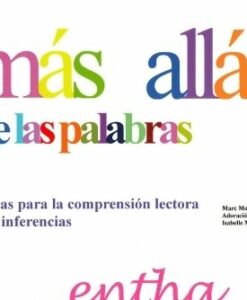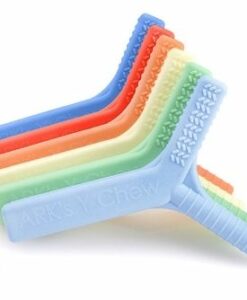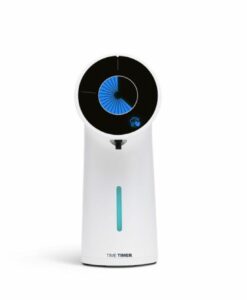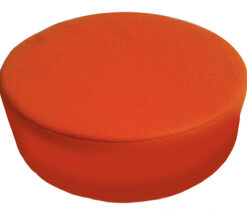
Aprender es modificar o adquirir nuevas habilidades, destrezas, conocimientos, conductas y valores mediante la experimentación, el estudio, la observación, el razonamiento o la instrucción. Múltiples y variados juegos disponibles hoy en día, desde los más clásicos hasta los más innovadores, pueden ser grandes herramientas para construir una variedad de aprendizajes: lectoescritura, matemáticas, razonamiento y resolución de problemas, etc. aportando motivación e interés a los jugadores. Más allá de la estimulación de las inteligencias múltiples, fomentaremos la autoestima, incentivaremos la cooperación y el trabajo en equipo y mejoraremos el comportamiento y la actitud, entre otros muchos aspectos.
 Auditory Memory Caterpillar
29,90 € (VAT not included)
Auditory Memory Caterpillar
29,90 € (VAT not included)
 Más allá de las Palabras. Tareas para la comprensión lectora e inferencias
21,15 € (VAT not included)
Más allá de las Palabras. Tareas para la comprensión lectora e inferencias
21,15 € (VAT not included)
 Graphic enhancement sheets
28,50 € (VAT not included)
Graphic enhancement sheets
28,50 € (VAT not included)
 Teether Y
8,90 € (VAT not included)
Teether Y
8,90 € (VAT not included)
 ARK Wingamajigs® Spinning Fidgets
13,65 € (VAT not included)
ARK Wingamajigs® Spinning Fidgets
13,65 € (VAT not included)
 Time Timer Wash and Soap - Hands free
66,00 € (VAT not included)
Time Timer Wash and Soap - Hands free
66,00 € (VAT not included)
 Orange vibrating cushion
35,45 € (VAT not included)
Orange vibrating cushion
35,45 € (VAT not included)
Price filter
No account yet?
Create an AccountOriginal memory to develop spatial orientation and learn opposite spatial positions: front-back, inside-outside, above-below, right-left, near-far, and together-separate. Form pairs of funny birds in opposite spatial positions, and test your observation and memory! Large size tiles with realistic scenarios.
The set consists of 36 tokens made of thick, sturdy, very durable and high quality cardboard. The tokens contain large images (10.8 x 6.8 cm) with real scenarios showing funny birds in opposite spatial positions. The material is environmentally friendly, comes from sustainable forests, is composed of a high percentage of recycled material, and is 100% recyclable.
RECOMMENDED AGE: From 3 to 8 years old.
The large size of the cards makes this game an ideal material to work on spatial orientation from an early age and with children with learning difficulties. The inclusion of illustrations with funny birds in real scenarios makes it especially attractive to learn the opposite spatial positions: front-back, inside-outside, above-below, right-left, near-far, and together-separated. Because of its characteristics, it is a very suitable game to play and learn spatial orientation both in the classroom and at home.
DIDACTIC OBJECTIVES:
Each figure is divided into four equal parts. First, place all the cards on the playing table face down and shuffle them well. Then, place them all in the form of lines. The first one has to turn over any two cards, so that the other players can see the motifs of the two cards. In case the two flipped cards are part of the same figure, they have to be placed back in the same place as the previous player.
The idea of the game is to collect as many complete figures as possible. But be careful! If a player already has two cards and another player turns over a card that is also part of the same figure, the latter can keep it and also take the other two cards from the first player. The second card turned over must be put back in its place face down. If he finds the other two parts of the figure at the same time, he can keep the completed figure for good.
In this way, the figures can change ownership several times until they are completed. Each player has a chance to win the game if he pays attention and memorizes the place where the corresponding cards are located.
The player who has already accumulated several figure parts does not necessarily win the game, as he may lose them again in the course of the game!
The player with the highest number of complete figures wins the game. https://logopedicum.com/wp-content/uploads/2022/11/Memory-puzzle-animales-247x300.jpg 9.50 instock 1 – 2 years2 – 3 yearsAGEGAMES AND TOYSLANGUAGEPuzzles and lacesSemanticsTYPE OF TOYWood 0 0.00 0 https://logopedicum.com/wp-content/uploads/2022/11/Memory-puzzle-animales-247x300.jpg 2160621267212972180021612 9.50 7.85 0.00 0.00 2022-12-22T16:30:55+01:00